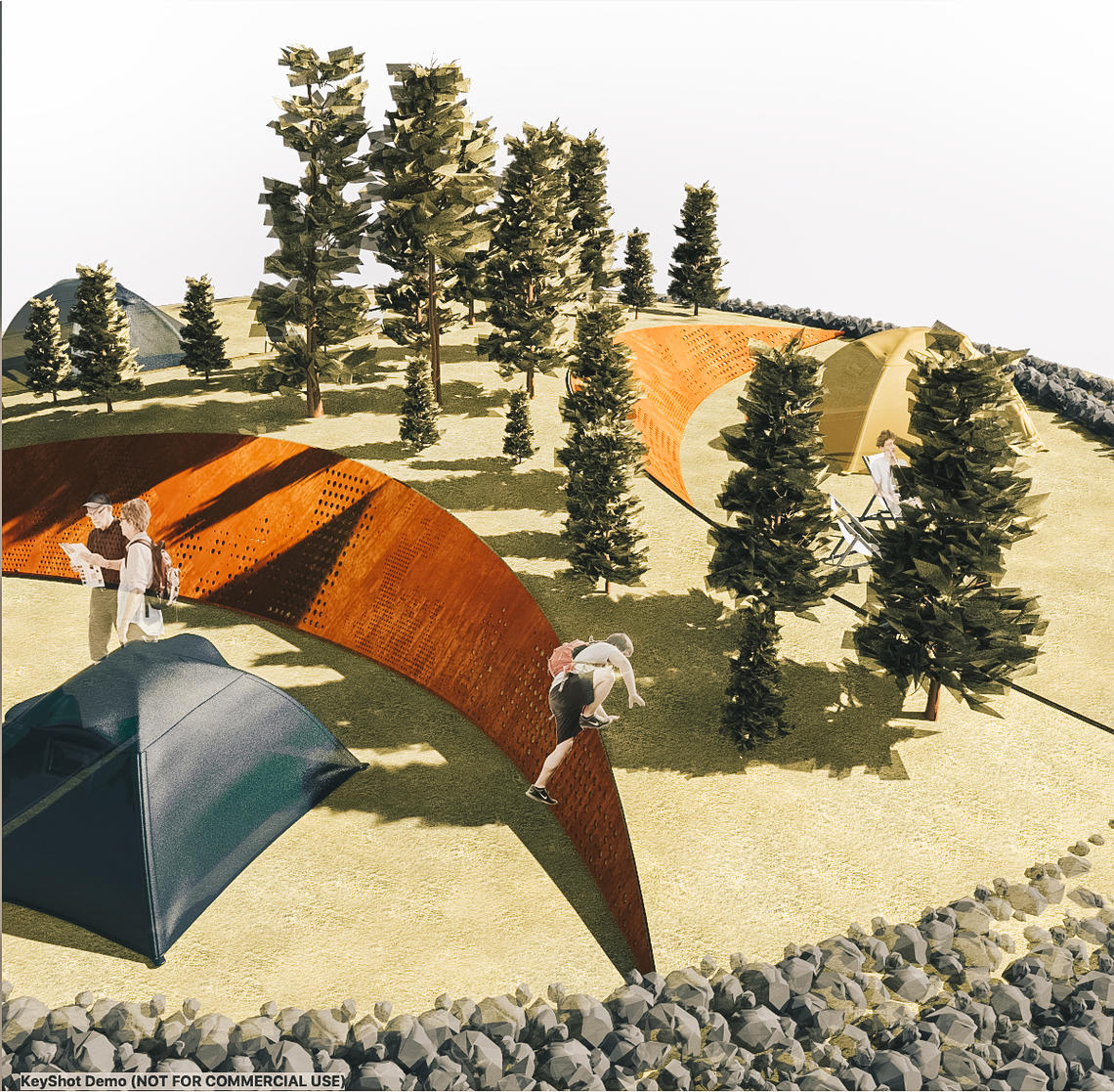June 7, 2019
Class of 2019: Landscape architecture grad meets challenge to design fire suppression for hard-hit Waterton area

When Jackson Brandt and his pals hiked through burnt-out areas of Waterton Lakes National Park in the summer of 2018, he was, without knowing it, checking out the site of his capstone project for the School of Architecture, Planning and Landscape (SAPL) at the University of Calgary. “We were literally walking through these burnt forests that I ended up studying six months later,” says Brandt. “I had unintentionally done this whole site visit last summer. That was pretty cool.”
Brandt and his classmates in the three-year Master's of Landscape Architecture (MLA) program spent a semester studying the landscape of Waterton in southern Alberta, the site of a massive wildfire in September 2017.
“Each student could dive into their own sections of the larger site context and really find something that they're passionate about,” he says. “I designed a natural firebreak to keep fires away from the Waterton townsite.” The firebreak, which is also a walk-in campground, contributes to the health of the environment and highlights the different adaptive cycles in an ecosystem.
Over the last 100 years or so, fire suppression techniques that were commonly used across Canada, including Waterton, have changed how local ecosystems work. “It caused more fuel to build up. It threw off the natural wildfire regime,” says Brandt. “As climate change continues, temperatures rise, and droughts increase, these fires are going to become more of an issue. The intensity and the size of the fires are much greater. Even if they occur less frequently, when they do occur, they end up causing more damage to the environment.”

Jackson Brandt designed a natural firebreak to keep fires away from the Waterton townsite.
While developing their design projects focused on the Waterton area, Brandt and his classmates applied a concept they’d learned during a class trip to Norway — the idea of creating a metaphorical archipelago and designing a series of connected islands, or ecological passes, for the park.
Brandt came from Winnipeg to UCalgary because he wanted “a very innovative, forward-thinking program.” And he’s proud to be part of the second graduating class of the newly accredited MLA program. He’s already started working with George Harris Collaborative Inc., a landscape architecture firm in Calgary. Harris was the Practitioner in Residence at SAPL for two years.
“It's a small firm, but we work on a wide scale of projects,” Brandt says. “It's a really good opportunity to work directly with the principals and learn from them. I'm going to start banking my required hours of work experience and if all goes well I hope to become a licensed landscape architect within two years.”
Mary-Ellen Tyler has no doubt all will go well for Brandt. "I have been surprised and impressed by how quickly Jackson picks up on new information and finds creative and innovative ways to incorporate it into his design thinking,” says Tyler, the associate dean of planning and landscape architecture at SAPL.
“Having watched the professional evolution of MLA students at more than one Canadian university over the last 40 years, I have no doubt that Jackson Brandt is a name that will become very well-known in the future of Canadian landscape architecture.”









































































